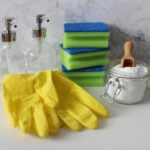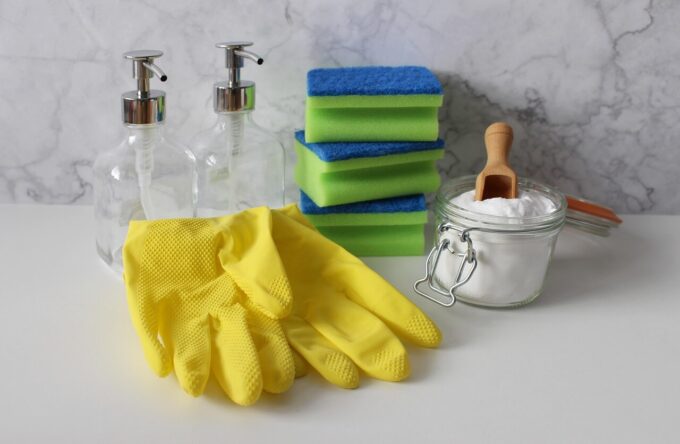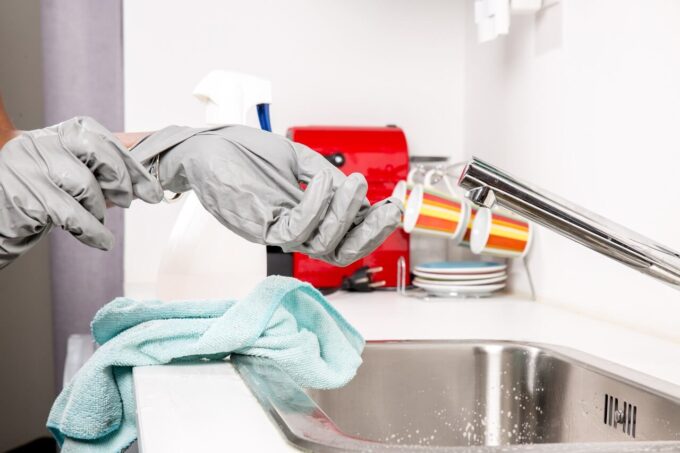
Reality check—walls accumulate debris over time. From oily handprints around switch plates to dark marks where furniture meets the wall, or even those unexpected tomato sauce spatters (we’ve all been there), your interior surfaces quietly collect various residues.
Here’s the dilemma: many homeowners hesitate to address wall grime because they worry about compromising the paint finish. After all, who wants to create patchy areas or dull spots?
Fortunately, maintaining your painted surfaces without causing damage is entirely possible—provided you employ appropriate techniques. This comprehensive guide explores safe methods for refreshing painted walls, addressing stubborn marks, and preserving their appearance with minimal investment of time and effort.
Optimal Frequency for Wall Maintenance
Short answer: conduct light maintenance every 3-6 months, with more frequent attention required in households with children, animal companions, or active cooking areas.
Let’s explore further. Even vertical surfaces naturally attract airborne particles, regardless of visibility. High-activity zones—such as corridors, cooking areas, or regions surrounding handles and switches—develop residue more rapidly.
A monthly dust removal session using a dry microfiber cloth helps prevent accumulation. Supplement this with more thorough maintenance quarterly. This approach not only enhances appearance but also extends the longevity of your paint investment.

Essential Supplies for Paint-Safe Maintenance
Assemble this straightforward toolkit (all items chosen for gentleness on most painted surfaces):
- Microfiber cleaning cloths – exceptionally gentle with zero abrasion risk
- Container with lukewarm water
- Gentle dishwashing liquid – select varieties formulated for sensitivity
- Distilled white vinegar – effective for kitchen-area residue
- Sodium bicarbonate – provides mild abrasive action without scratching
- Melamine foam cleaners – reserved exclusively for glossy or semi-gloss finishes
- Elevated platform – for safely reaching upper wall sections
These accessible household staples eliminate the need for specialized cleaning products.
Preserving Paint Integrity: A Methodical Approach
Follow these straightforward steps:
1. Initial Dust Removal
Begin with a thorough dust elimination using a dry microfiber cloth or vacuum with soft brush attachment. Always work from ceiling toward floor.
2. Prepare a Mild Cleaning Solution
Fill a container with lukewarm water and incorporate a minimal amount of gentle dishwashing liquid. For areas with cooking residue, add a measured portion of white vinegar.
3. Preliminary Testing
Before widespread application, apply your solution to an inconspicuous wall section to verify compatibility with your specific paint finish.
4. Gentle Surface Treatment
Moisten your cloth with the cleaning mixture, removing excess moisture thoroughly (cloth should be barely damp). Apply to walls using light circular movements rather than aggressive scrubbing.
Proceed in manageable sections, frequently rinsing your cloth to prevent redistributing grime.
5. Solution Removal (When Necessary)
If beneficial, follow with a clean, lightly dampened cloth to eliminate any residual cleaning solution.
Allow natural air-drying or gently blot with a dry cloth.

Addressing Specific Wall Marks Without Paint Damage
Here are targeted approaches for common wall challenges—while preserving your paint:
Cooking Residue / Oil Splatter: Combine equal portions of white vinegar and water. Apply using a soft cloth with gentle pressure.
Art Supply Marks: Create a paste using sodium bicarbonate and water. Apply carefully to the affected area using minimal pressure.
Hand Residue: Use a slightly dampened microfiber cloth with minimal dishwashing liquid.
Furniture Contact Marks: A barely moistened melamine foam cleaner proves effective—but exercise caution, particularly on matte or flat paint finishes.
Important: Avoid rough-textured cleaning tools or potent chemical solutions—these can readily compromise or diminish paint quality.
Strategies for Prolonged Wall Freshness
Extend the results of your cleaning efforts with these practical habits:
- Perform monthly dust removal using a dry microfiber cloth to prevent accumulation.
- Regularly address wall junctions, baseboard areas, and switch surrounds.
- Eliminate indoor smoking—which rapidly discolors wall surfaces.
- Install protective pads and maintain distance between furniture and painted walls.
- Address marks immediately upon discovery—recent stains yield more readily to cleaning efforts.
Consistent minor attention significantly reduces maintenance needs. Moreover, regular care means less frequent repainting requirements.
Maintaining painted surfaces needn’t be intimidating. With appropriate products and techniques, you can effectively remove accumulated residue, cooking spatters, and dust—while maintaining your paint’s integrity. By incorporating wall care into your regular home maintenance routine, you’ll preserve that fresh appearance without requiring constant touch-ups or early repainting.
Latest Posts
How to Deep Clean Your Kitchen in One Afternoon
Face it—thoroughly scrubbing your kitchen rarely tops anyone’s list of enjoyable activities....
3 Mins readHow Often Should You Really Be Cleaning These 10 Things?
(Unexpected insights for a healthier home environment) Most households maintain some form...
3 Mins readHow to Attract Pollinators to Your Backyard Garden
Dreaming of a vibrant, flourishing garden space? Whether you’re cultivating vegetables, nurturing...
3 Mins readHow to Get Rid of Pet Hair from Furniture and Floors
Animal companions bring immeasurable joy—and an inevitable shower of shed fur. This...
3 Mins read










